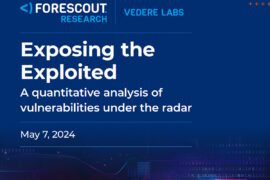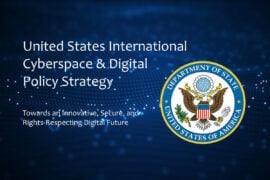US releases framework for space diplomacy, focuses on critical infrastructure and cybersecurity of space

The U.S. Department of State released a framework to promote and explain the nation’s policy on cybersecurity and information and communications technologies (ICTS) in space, space-related critical infrastructure security and resilience, and space asset resiliency on the international stage.
Titled ‘Strategic Framework for Space Diplomacy,’ the document outlines how State Department diplomacy will advance continued U.S. space leadership and expand international cooperation on mutually beneficial space activities. It will also promote responsible behavior from all space stakeholders; strengthen the understanding of and support for U.S. national space policies and programs; and promote the international use of U.S. space capabilities, systems, and services.
“The October 2022 National Security Strategy underscores these U.S. leadership objectives for outer space,” the framework said. “Our work will also be governed by Space Policy Directives5, other national space-related policies, and Executive Orders, by the ideals and tenets set out in the FY 2022 -2026 State-USAID Joint Strategic Plan6, and other national strategies and policies, including the National Cybersecurity Strategy, the National Security Memorandum on Counterterrorism, the National Strategy on Gender Equity and Equality, U.S. Strategy on GlobalWomen’s Economic Security, and national policies and plans on critical infrastructure security and resilience.”
It added that the nation’s space diplomacy is in line with and will further the Department’s mission of protecting and promoting U.S. security, prosperity, and democratic values and shaping an international environment in which all Americans can thrive.
The framework is set to work with U.S. cybersecurity agencies and entities to promote a secure environment with cybersecurity interoperability to strengthen space asset resiliency against adversarial offensive operations. It will also collaborate with interagency, allied, partner, and commercial space system operators to promote the development and adoption of best practices and risk mitigations.
Furthermore, the framework works on enhancing the understanding of and integrating cybersecurity of, space equities and objectives into U.S. positions at cybersecurity and other multilateral fora. It also promotes comprehensive, risk-based approaches for the cybersecurity of ground and space-based systems, along with appropriate physical security strategies.
The State Department framework also includes commercial space stakeholders, as appropriate, in international efforts to promote secure and resilient critical infrastructure. It also works with commercial space stakeholders to advance the use of space systems to complement, where possible, and expand the reach of information and communications technologies and services’ global connectivity.
It also seeks to align space regulations with U.S. ICTS security policies, such as E.O.13873, 14034, 14028, and SPD-5.
The framework said that along with diplomacy on civil space activities and national security, “we will pursue cross-cutting diplomacy related to commercial space; strategic competition; non-proliferation, technology transfer and export controls; cybersecurity of space systems; and space situational awareness and international preparedness.”
The framework also said when it comes to supporting U.S. and international civil and commercial space activities, the Department will integrate space-related policy and programmatic objectives and concerns into international cybersecurity, electromagnetic spectrum, environmental, critical infrastructure, and other relevant diplomatic fora.
Additionally, it will collaborate with the industry and encourage partner development and integration of cybersecurity plans for space systems that mitigate unauthorized access to critical space system functions, reduce vulnerabilities, protect ground systems, promote cybersecurity hygiene practices, and manage supply chain risks.
Last month, the Cyberspace Solarium Commission (CSC) 2.0 assessed that America’s adversaries recognize the importance of space systems to U.S. national security and economic prosperity and have tested capabilities to destroy them. Before that in March, the Space ISAC launched its Operational Watch Center and its initial operational capability. Supported by a dedicated team of ten in-person analysts with additional virtual support enabled by a secure cloud architecture, Space ISAC’s Watch Center represents a monumental step forward for the space community.
The Aerospace Corporation also released v1.3 of its Space Attack Research and Tactic Analysis (SPARTA) framework, providing a general information page, SPARTA navigator, and SPARTA Matrix Updates. The latest version also delivers 14 new countermeasures (CMs) and includes SPARTA Countermeasure Mapper. The SPARTA matrix is the first publicly available cybersecurity threat identification and response matrix dedicated to helping spacecraft developers, owners, and operators outpace space-cyber threats.










